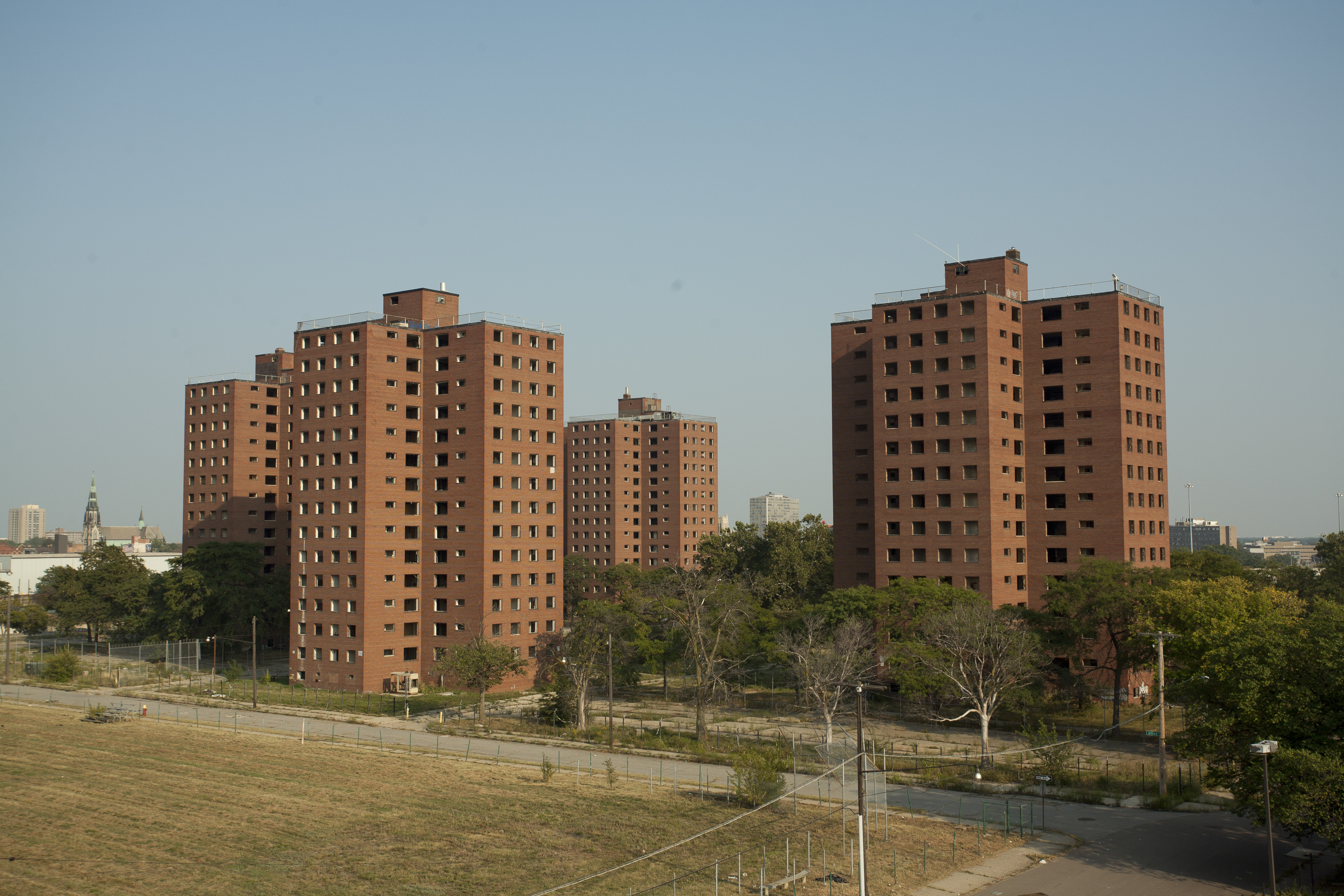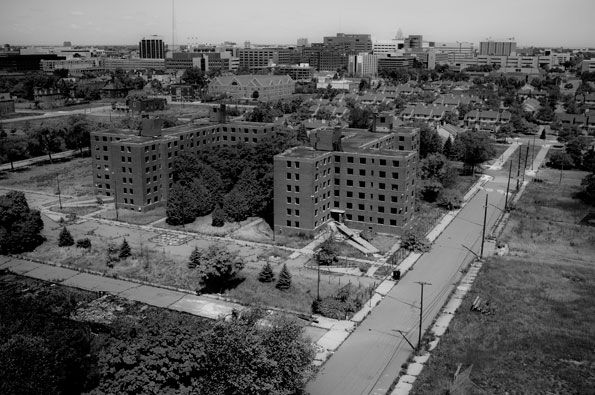Brewster-Douglass Housing Projects
The Brewster - Douglass Housing Project was the largest social housing project for African Americans to the city of Detroit. Was named the plant after Frederick Douglass, African American abolitionist, author and reformer. The complex is completely empty since 2008. The residence was occupied by Motown, among others, as well as celebrities such as Diana Ross, Mary Wilson, Florence Ballard, Lily Tomlin, and Smokey Robinson & the Miracles.
History
The first efforts to implement a state-funded social housing project exclusively for African Americans in 1933, was followed not only internationally with great interest. At this time of racial segregation was normal, the planning was seen very skeptical. The fear of loss of value of the adjoining land led to the beginning of violent riots against the new residents.
Building
The Frederick Douglass - residential development was planned and built 1942-1955 by the architects Harley Ellington & Day of Detroit. The system consisted of two 6 -story low-rise buildings and six 14-storey towers. The towers were part of the original even greater Brewster - Douglass Housing Project. The entire complex was five blocks long and three blocks wide and were occasionally occupied 8000-10000 people.
Resident
The plant was built for the working poor. In order to be allowed to live here, the employment of at least one parent against the Detroit Housing Commission had to be occupied. The system collapsed in the late 1960s, when wealthier residents moved to the suburbs to escape the growing crime.
The Hastings Street, on the southern edge of the Brewster -Douglass Homes, was in Detroit as a center of black culture between 1920 and 1950. Here, among others, the Supremes met. When the Hastings Street the expansion of the auto city with the Chrysler Freeway fell victim pulled out a large part of the inhabitants of 1963-1968 in the area around 12th Street, today's Rosa Parks Street, where the race riots broke out in Detroit in 1967.
Despite renovation 1994, the low-rise buildings were demolished and replaced by 250 townhouses. After a study showed that 42 % of all social residential buildings in Detroit were empty, 2003, two of the six towers were demolished.
Today
The complete system is now uninhabited, the remaining four towers stand as a memorial along the Chrysler Freeway. That here wrote Motown music history is unimaginable today. The plant is only one of many empty buildings in Detroit complexes.
Weblink (English)
- Brewster Housing photographs
- Brewster Homes
- The history of social housing in the U.S.
42,345 - 83.047Koordinaten: 42 ° 20 '42 " N, 83 ° 2' 49 " W
Weblink ( German )
- Past meets present in Detroit
- Building in Detroit
- Detroit










